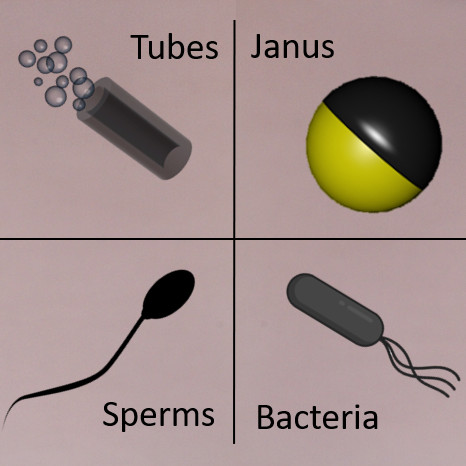
Audrey Nsamela, Priyanka Sharan, Aidee Garcia-Zintzun, Sandra Heckel, Purnesh Chattopadhyay, Linlin Wang, Martin Wittmann, Thomas Gemming, James Saenz and Juliane Simmchen ChemNanoMat (2021) doi: 10.1002/cnma.202100119
Abstract: Although many biological fluids like blood and mucus exhibit high viscosities, there are still many open questions concerning the swimming behavior of microswimmers in highly viscous media, limiting research to idealized laboratory conditions instead of application‐oriented scenarios. Here, we analyze the effect of viscosity on the swimming speed and motion pattern of four kinds of microswimmers of different sizes which move by contrasting propulsion mechanisms: two biological swimmers (bovine sperm cells and Bacillus subtilis bacteria) which move by different bending patterns of their flagellaand two artificial swimmers with catalytic propulsion mechanisms (alginate microtubes and Janus Pt@SiO 2 spherical microparticles). Experiments consider two different media (glycerol and methylcellulose) with increasing viscosity, but also the impact of surface tension, catalyst activity and diffusion coefficients are discussed and evaluated.
